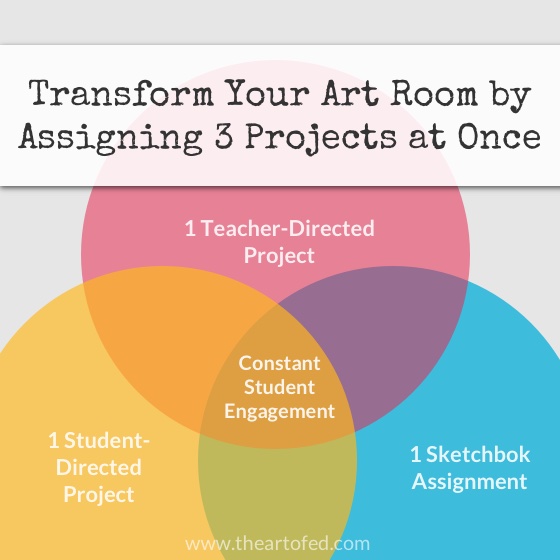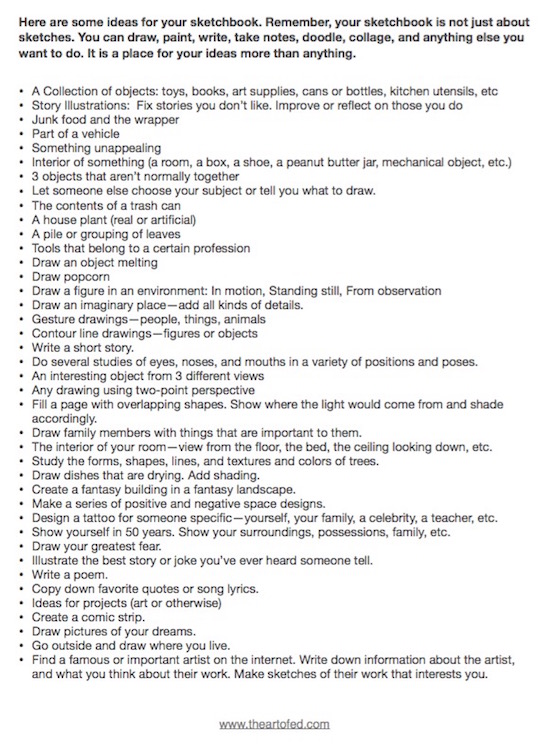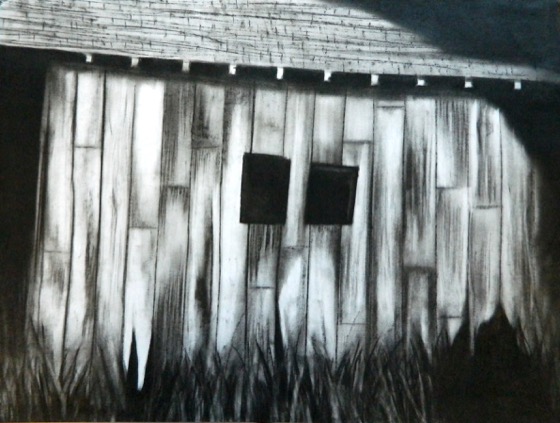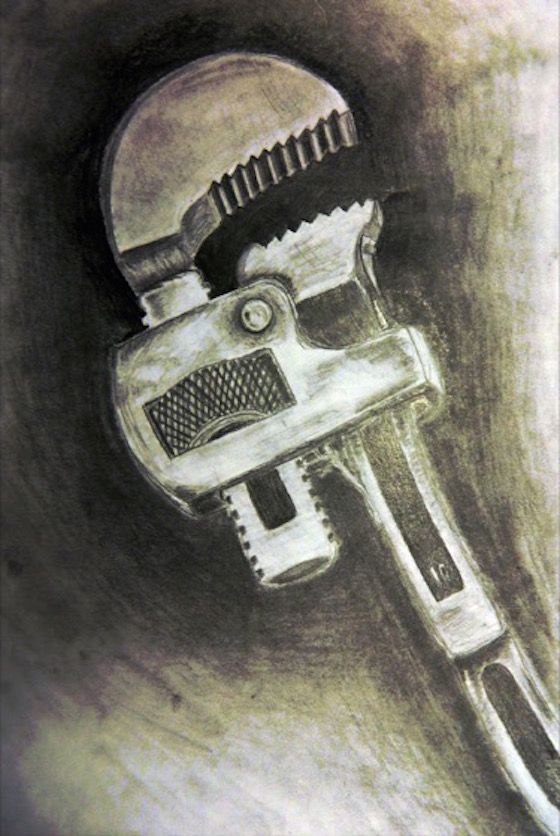I like to have three projects going at the same time in my classroom. This practice does a lot for me. It keeps my kids busy and eliminates a lot of my smaller classroom management problems. When I presented on a related topic at a past AOE Summer Conference, I got more questions about that small section of my talk than the rest of what I said combined. So, I decided I better fill everyone in on how and why this practice works.

The How
It’s actually not that difficult to run three projects at once. What I like to do is introduce a new project each day for three consecutive days. Each day, I will let my students adapt their ideas; they brainstorm, sketch, plan, and make whatever changes they may need for the rest of the class period. Then, on the fourth day, they are free to work on whichever of the three projects piques their interest the most.
Each day, they have their choice of which project they would like to work on, so you eliminate the problem of projects that seem to drag on and on. If kids need a break, or if they need a breather from a particular project, there are always options of what they can do otherwise. Some kids are always finishing earlier than others, and having three projects eliminates the downtime that’s created by those earlier finishers. They always have a backup project to which they can direct their attention when they’re finished with their first.
The What

The second most common question I got from my talk was about which projects I give my students when we’re doing three projects at once. What I like to do is give one teacher-directed project, a second that is a combination of teacher direction and student choice, and a third which is a general and open-ended sketchbook assignment. You can download one list of prompts that I give to my students below.

For example, my first project for the year is generally a tool drawing that focuses on precision, shading, and line. This would be my teacher-directed lesson. Secondly, I would give students a theme focused on construction or destruction, and they could come up with their own idea of where to go with their student-directed lesson. Then, I give students a brief art history lecture and writing assignment along with a sketchbook assignment. Between that combination of work, there’s always something for students to do.

The Why
Far too many of our minor classroom management issues appear when kids have nothing to do. I’m not talking about the big blow up types of behavior; sometimes the most dramatic misbehaviors can’t be controlled.
But a lot of the minor occurrences–the annoyances, the little things that kids do to get on your nerves–those can be eliminated by keeping them busy. With multiple projects happening at the same time, students are engaged and actively working–which is what our art students should always be doing when they’re in the room.
Due Dates and Grading
A big concern a lot of people have is about when each of these assignments are due and how they are graded. I don’t have hard and fast due dates in my classroom. I simply tell my students which day we will be moving on, and if they are not done with the previous project they need to finish it on their own time. As far as grading, I don’t penalize kids if they don’t get projects done. That comes with the caveat, however, that students need to be engaged and working if they are going really in depth on a single project. I can’t penalize them in good conscience for not doing the other projects if they completely direct their focus, interest, and inspiration at a single project.
If they’re being lazy, I’m more than happy to put a zero in the grade book for the incomplete projects, but not when they are putting forth their best effort. What would you rather have: one outstanding project that a kid put everything into, or one decent project and two rushed ones that were terrible in terms of both process and product?
As you can see, running three projects is not actually that difficult. It may take a little bit of adaptation to what you do in your own classroom, and a little flexibility on your part, but it will pay off in student engagement, student activity, and lack of misbehavior. I would encourage you to give it a try.
Do you have students working on multiple projects at once?
How do you structure your assignments?
Magazine articles and podcasts are opinions of professional education contributors and do not necessarily represent the position of the Art of Education University (AOEU) or its academic offerings. Contributors use terms in the way they are most often talked about in the scope of their educational experiences.





